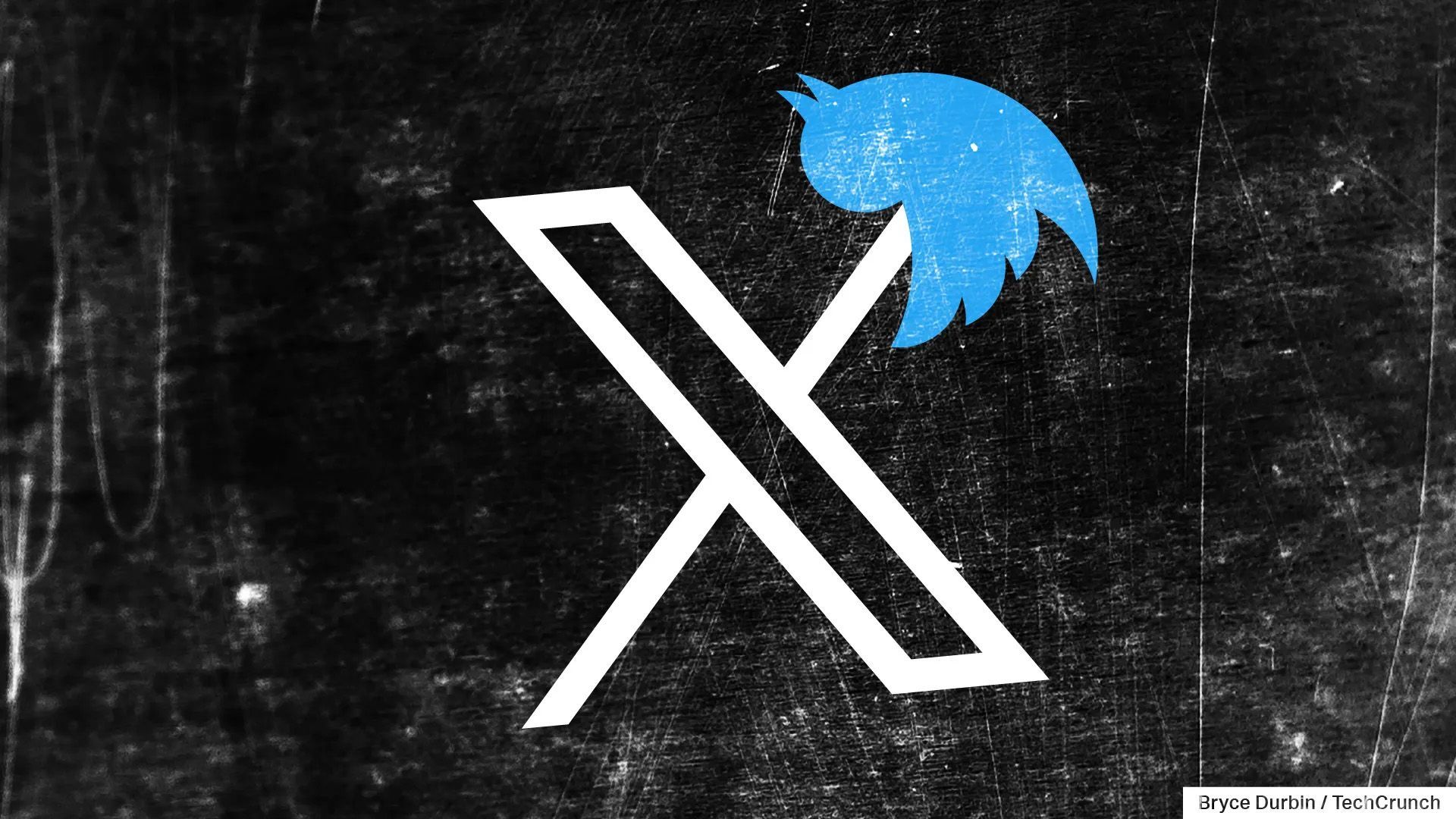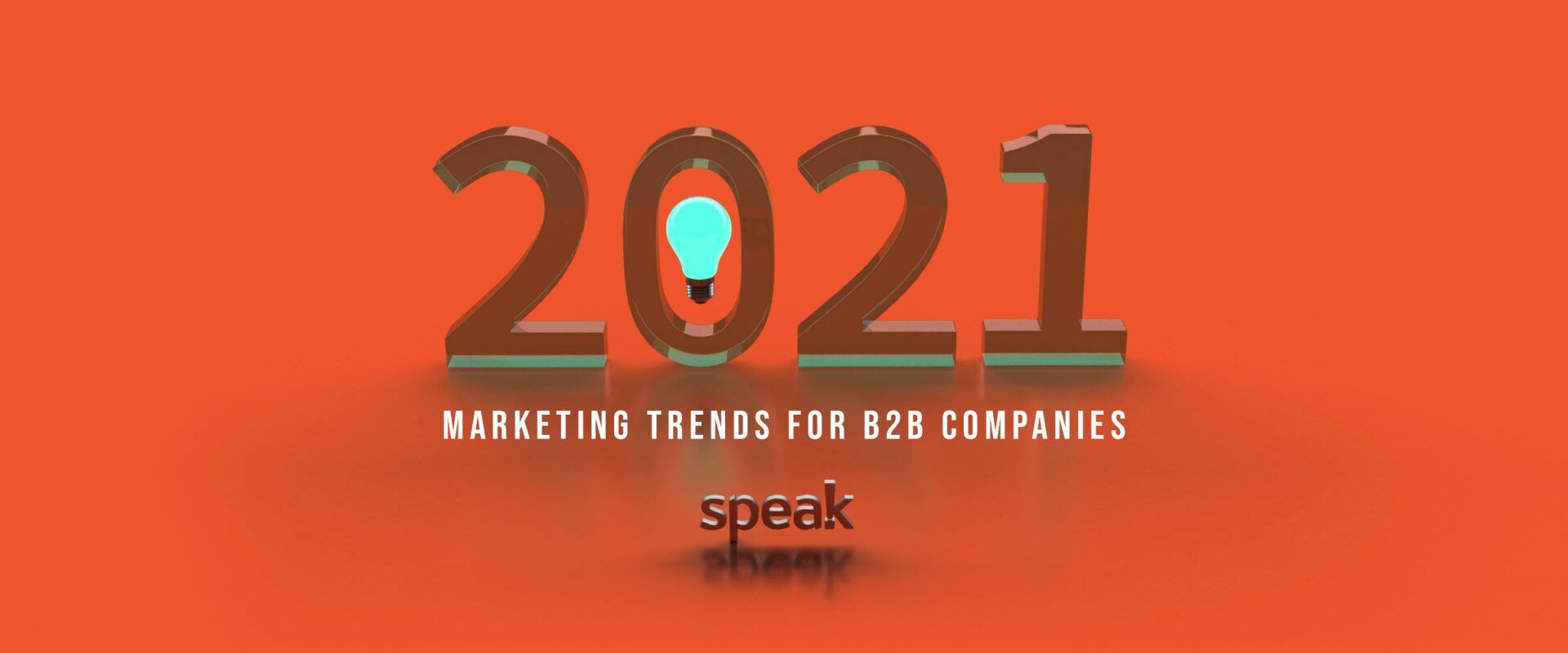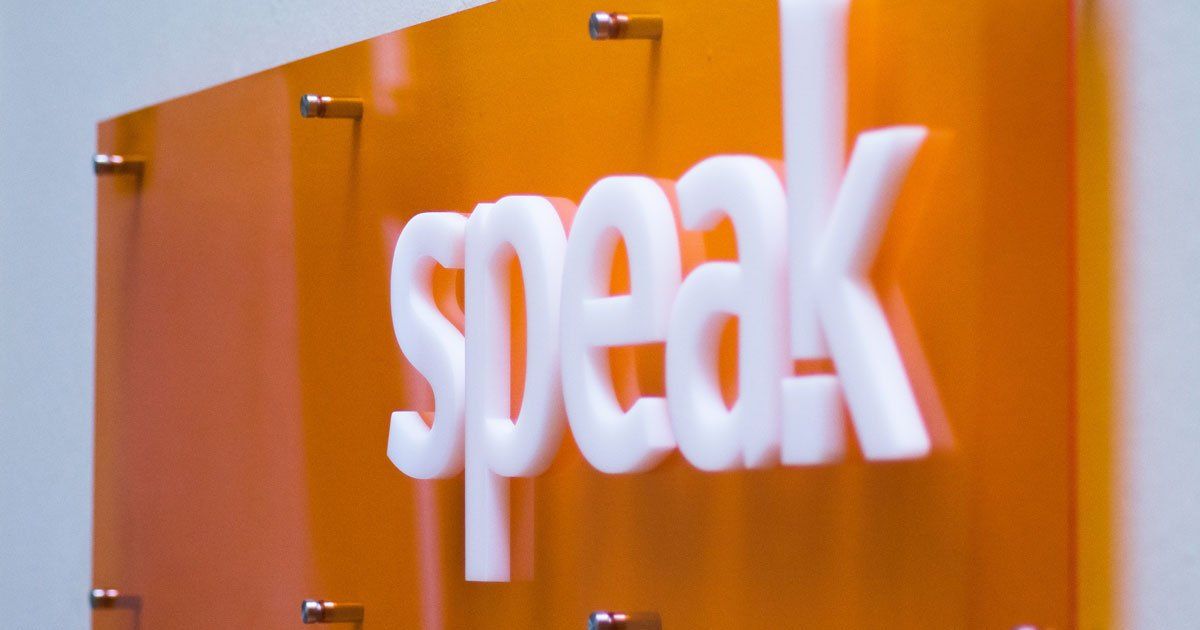OUR BLOG
B2B Brand Beacons

In marketing, we love a good acronym. But let’s be real— USP (Unique Selling Proposition) is starting to feel like one of those legacy systems we all pretend still has value because it’s “core to the business.” You know the type: old, clunky, and painfully out of sync with how people make decisions today.

Brand transformation is more than linguistic gymnastics — it's a multidimensional shift that requires both visual and verbal integration to be fully understood and executed. As branding professionals, we often find ourselves at the intersection of words and imagery, negotiating the complex relationship between what is said and what is seen. Beyond Words: The Dual Nature of Brand Understanding When we consider how brands evolve and transform, we must acknowledge that positioning and messaging alone cannot capture the full essence of a rebrand. That's because a brand also lives in the visual impact of its logo, the emotional response to its color palette, the tactile experience of its products, and the psychological associations formed through consistent imagery. These elements create meaning in ways that transcend verbal explanation. This integrated nature of brand understanding presents both challenges and opportunities for brand strategists and agencies. Those who rely solely on brand messaging frameworks often miss the deeper, more intuitive connections that visual elements forge with audiences. Conversely, those who neglect verbal precision may create beautiful but meaningless brand experiences. The Strategist's Dilemma This reality creates a fascinating paradox for brand strategists. On one hand, it's a blessing — those who master the integration of visual and verbal thinking possess a competitive advantage that purely analytical thinkers cannot match. They can navigate the subtleties of brand transformation with a more complete toolkit, sensing shifts in cultural meaning that might be invisible to others. On the other hand, it presents a curse — how do we communicate about something that partially exists beyond the realm of words? How do we justify decisions that are partly intuitive? How do we demonstrate value when some of the most important aspects of our work resist straightforward measurement or explanation? Embracing Integrated Thinking The most successful brand transformations occur when strategists embrace both modes of thinking: Understanding the rational and emotional components of brand perception Recognizing when to prioritize visual impact over verbal explanation (and vice versa) Developing frameworks that respect both analytical rigor and creative intuition Communicating in ways that engage both logical and visual processing Moving Forward As the branding landscape continues to evolve, the integration of visual and verbal thinking becomes not just advantageous but essential. The brands that resonate most deeply with audiences are those that achieve coherence across all dimensions of experience. By acknowledging the limitations of purely linguistic approaches and embracing the full spectrum of how meaning is created, brand strategists can navigate transformation more effectively—even if they sometimes struggle to put into words exactly why something works. The Speak! Approach: Integration in Action At Speak!, we've built our entire agency model around the principle that visual identity and messaging strategy must be conceived and developed in concert — never in isolation. This integrated approach isn't just a philosophical stance; it's the foundation of our process and the key to our success in transforming brands. Rather than having verbal and visual specialists only intersect when work is handed off, we are cross-disciplinary teams where messaging strategists and visual designers work side by side from day one. Our brand strategy function (that's me) leads stakeholder interviews and workshops but our art director is always on the call and not just as a passive listener. Engaged. Asking hard questions. Poking holes. This ensures that every strategic decision considers both dimensions simultaneously. The benefits of our integrated approach are evident in the results we deliver: Greater Coherence : When messaging and visuals grow from the same strategic foundation, they naturally reinforce each other, creating a brand experience that feels seamless and purposeful. Deeper Resonance : Brands that speak to both the rational mind (through clear messaging) and the intuitive mind (through visual impact) create more powerful and lasting impressions with audiences. Faster Alignment : Our clients spend less time reconciling conflicting approaches from different specialists and more time refining a unified strategic direction. Unexpected Solutions : The creative tension between verbal and visual thinking often leads to breakthrough ideas that neither approach would have discovered independently. Our clients often tell us that this integrated process not only delivers superior results but also provides them with a new lens through which to understand their own brands. By experiencing the power of visual-verbal synergy in action, they gain insights that transform not just their brand assets but their entire approach to brand management.

Artificial intelligence has become an indispensable tool for many corporate branding teams aiming to streamline processes and scale impact. From creating more relevant customer experiences to simplifying asset management, AI’s role in branding is only growing. However, while it offers compelling efficiency benefits, there are still areas where human expertise is irreplaceable. In this article, we’ll look at five ways AI can improve efficiency for corporate branding teams — and four areas where caution is warranted. Five Ways AI Can Drive Efficiency in Branding 1. Audience Insights and Market Research AI-driven tools like natural language processing (NLP) and sentiment analysis allow branding teams to collect and interpret massive amounts of social media data, customer feedback, and online conversations. This capability enables a nuanced understanding of audience preferences and behaviors at unprecedented speed and scale, empowering brand teams to adjust their strategies based on real-time insights. At Speak!, we’re even experimenting with tools that allow us to “interview” AI-generated personas, asking questions that may help guide brand positioning and messaging decisions. 2. Streamlining Content Creation and Curation AI tools like ChatGPT and other language models can help produce blog articles, social media copy, and even video scripts. These tools assist branding teams by drafting content quickly, helping marketers overcome writer's block, and enabling faster turnaround times for campaigns. While AI might not replace a seasoned writer, it’s an efficient co-pilot for getting through the initial stages of content creation. Just make certain humans oversee the content and creative development process to ensure the brand's voice, tone and visual identity are properly reflected. 3. Enhanced Personalization and Targeting AI-powered platforms can dynamically adjust ad and content delivery based on audience segmentation, behaviors, and real-time interactions. By analyzing a user’s journey, AI helps brands provide more tailored experiences that resonate with individuals on a personal level. This personalized approach improves engagement rates and ensures marketing efforts aren’t wasted on generic or misaligned messaging. 4. Asset Management and Organization With the sheer volume of content and assets a branding team manages, keeping everything organized can be challenging. AI can automate metadata tagging, image recognition, and file categorization, making it easier to search, retrieve, and repurpose assets. This helps brand teams find the right content faster, reducing time spent searching through databases and cloud storage. 5. Predictive Analytics for Campaign Success AI tools can analyze past campaigns and provide predictive insights on potential outcomes for future initiatives. Branding teams can use these insights to identify what messages, visuals, and formats are likely to succeed, optimizing their resources by focusing on high-impact approaches. Predictive analytics also enables A/B testing with smaller sample sizes, reducing the guesswork in campaign planning. Three Areas Where AI Shouldn’t Replace Human Expertise 1. Core Brand Strategy and Vision Development The essence of a brand is rooted in purpose, authenticity, and values — all aspects that require a human touch. AI can provide data to support strategic decisions, but defining a brand’s identity and purpose should remain a deeply human endeavor. When brand teams rely too heavily on AI for strategic guidance, they risk diluting the brand’s emotional impact and missing opportunities to connect with audiences on a deeper level. 2. Complex, Creative Ideation AI tools are excellent for optimizing creative elements but less effective at generating the kind of breakthrough ideas that come from human intuition and cultural understanding. Creative ideation for major campaigns, brand refreshes, or new product launches demands insight, risk-taking, and emotional intelligence that AI currently cannot replicate. Relying on AI too heavily in this area may result in “safe” but uninspired campaigns. In other words, the kind of concepts destined to be ignored in the market. 3. Crisis Management and Authentic Communication In times of crisis, consumers expect brands to respond with empathy, transparency, and sincerity. Automated responses or AI-generated statements often lack the nuance required to handle sensitive situations effectively. Corporate branding teams should prioritize human involvement to craft messages that are thoughtful and authentic, showing genuine empathy and respect for their audience’s concerns. Up for Debate Photo and Image Generation AI tools like Midjourney and Adobe Firefly are revolutionizing the ability to create realistic photos on the fly. However, the process of doing so comes with risk. Generative AI platforms are trained on huge archives of images and text. It’s unclear who owns the images that AI platforms create for you. One of our clients has hit the pause button on GenAI image creation by employees, contractors, and agencies due to concerns about licensing and legal ramifications but also about the authenticity of AI-generated images (authenticity happens to be one of their ore brand pillars). Other corporate brand teams don't permit images that feature people or product representations to be created with AI. Striking the Right Balance The growing presence of AI in branding offers remarkable opportunities to increase efficiency, but the human element remains essential. AI can handle repetitive tasks, analyze data at scale, and speed up content creation, but some of branding’s most important responsibilities — such as crafting a brand’s identity, creating breakthrough ideas, and communicating during crises — are best left in human hands. By combining AI’s analytical capabilities with human insight and creativity, corporate branding teams can create a more efficient and impactful branding ecosystem. Using AI smartly means identifying where it adds value and where human expertise is irreplaceable. Brands that strike this balance will be better positioned to evolve in a rapidly changing landscape while retaining their unique voice and purpose.

In B2B technology arenas like SaaS, IT services, and IT infrastructure, standing out in a crowded marketplace is both a challenge and a necessity. Brand directors and CMOs are tasked with the critical role of ensuring their company's unique value proposition is clear, compelling, and consistent. Yet, even the most seasoned professionals can sometimes miss the signs that their brand positioning is off-kilter. Here are five key indicators that your B2B tech brand may have a positioning problem. 1. Your Go-To Slide Deck is 40+ Slides One of the clearest signs of a positioning problem is an overstuffed slide deck. If your standard presentation to prospects or stakeholders is more than 40 slides, it’s a red flag. An overly lengthy deck often means you’re trying to compensate for a lack of clarity and focus. Instead of delivering a succinct and compelling narrative, you’re bombarding your audience with information in the hope that something will stick. A well-positioned brand can convey its core message and value proposition in just a few slides. It should be easy to communicate what your company does, how it’s different, and why it matters. If you find yourself needing slide after slide to explain your business, it’s time to revisit and refine your positioning. 2. You Sound Like All Your Competitors In the B2B tech space, differentiation is key. If your messaging sounds eerily similar to that of your competitors, your brand is likely suffering from a positioning problem. When your value proposition, key messages, and even your taglines echo the industry norm, it becomes challenging for prospects to see why they should choose you over another provider. Conduct a competitive analysis to see how your messaging stacks up against others in your industry. If you find that your language, tone, and claims blend in with the crowd, it’s a clear indication that your positioning needs a refresh. Aim to highlight your unique strengths and the distinct benefits you offer to stand out in a sea of sameness. 3. Even Your Employees Can't Describe What You Do or Why It’s Important Your employees are your brand ambassadors, and if they struggle to articulate what your company does and why it matters, you have a positioning problem. When employees can’t easily describe your company’s mission, products, and unique value, it points to a lack of internal alignment and clarity. Hold internal workshops or training sessions to ensure that everyone in your organization understands and can communicate your brand’s positioning. A strong, clear, and well-communicated positioning strategy not only helps in external marketing efforts but also boosts internal morale and alignment. 4. Your Sales Cycle is Incredibly Long While B2B tech sales cycles are inherently longer due to the complexity of products and decision-making processes, an excessively long sales cycle can indicate a positioning issue. If prospects are taking too long to move through the sales funnel, it may be because they don’t fully understand the value you provide or how you differ from competitors. Clear and compelling positioning helps prospects quickly grasp your value proposition — even before they engage with Sales — leading to faster decision-making. Review your sales and marketing materials to ensure they are succinct, compelling, and aligned with your brand’s unique strengths. Simplifying and clarifying your message can help reduce the length of your sales cycle. 5. Your Market Share is Stagnant or Declining If your market share has plateaued or is declining, despite consistent marketing and sales efforts, it’s a strong indicator that your brand positioning may be off. Stagnant or declining market share suggests that your target audience isn’t resonating with your current positioning, or worse, they’re being swayed by competitors with clearer, more compelling messages. Conduct market research to gather insights on how your brand is perceived versus your competitors. Use this data to refine your positioning strategy, ensuring it aligns with market needs and differentiates you from the competition. A well-positioned brand should be able to capture and grow market share by clearly communicating its unique value proposition. Outside Perspective is a Game Changer Identifying and addressing a positioning problem is crucial for the success of your B2B tech brand. Gaining the outside perspective of a brand agency can help identify opportunities internal stakeholders may be too close to see. Speak! has helped a long list of tech leaders discover their brand essence and carve out a compelling position. Let our leadership team provide an initial analysis of your positioning and visual identity strategy . Tell us a little bit about your brand and we'll weigh via a video recording with our assessment and provide some actionable tips and priorities.

Rebranding is a powerful strategy for businesses aiming to rejuvenate their market presence or adapt amidst periods of change (acquisitions, new products, new competition, etc.). However, it's a delicate process that requires a deep understanding of brand equity and a clear strategy to assess the impacts before and after rebranding. In this blog, we will explore the influence of rebranding on brand equity, customer perception and loyalty, and the crucial role of market research in measuring the success of a rebranding effort.

In the world of B2B technology, where innovation and competition thrive, the right brand messaging can be the differentiator that sets your company apart. A well-crafted brand messaging framework not only resonates with your target audience but also conveys your unique value proposition clearly and effectively. In this blog, we'll delve into the components of a brand messaging framework, explore the three essential C's of brand messaging, discuss the process of creating one, and highlight the key characteristics that make brand messaging impactful. What Should Be Included in a Messaging Framework? A brand messaging framework is a structured approach to communicating your company's identity, values, and offerings. It ensures that every piece of content, from your website to your social media posts, aligns with your brand's core message. Your messaging framework should include: 1. Core Value Proposition: Define what makes your B2B tech company stand out. Identify the unique value you bring to the table and how it addresses your customers' pain points. At Speak!, we recommend crafting what we call a Master Message — your go-to message for articulating what you do and why it matters. 2. Target Audience: Clearly define your ideal customer personas. Understanding their challenges, needs, and preferences will help you tailor your messaging to resonate with them. 3. Brand Voice and Tone: Decide on the tone of your communication. Are you formal or casual? Approachable or authoritative? Your brand's voice should be consistent across all interactions. 4. Key Messages: Develop a set of key messages that encapsulate your value proposition and benefits. These messages should be clear, concise, and easy to remember. 5. Proof Points: Back up your claims with evidence. Use case studies, testimonials, and data to demonstrate how your solutions have helped clients overcome challenges. 6. Differentiators: Highlight what sets you apart from competitors. Whether it's innovative technology, exceptional customer support, or a unique approach, emphasize what makes you unique. 7. Call to Action (CTA): Every piece of content should guide your audience toward the next step. Whether it's contacting your sales team or downloading a resource, make your CTAs compelling. The 3 C's of Brand Messaging In the B2B tech landscape, where complexity is the norm, brand messaging should be clear, concise, and compelling – the three C's that capture your audience's attention and convey your message effectively. 1. Clear: Your messaging should be crystal clear. Avoid jargon and technical terms that might confuse your audience. Use language that anyone, regardless of their familiarity with the industry, can understand. 2. Concise: In a world where attention spans are shorter than ever, brevity is crucial. Craft messages that are succinct yet impactful. Get to the point and highlight the most important information. 3. Compelling: Your brand messaging should be compelling enough to engage your audience emotionally. Share stories, statistics, or examples that evoke a response and resonate with their pain points and aspirations. Creating a Brand Messaging Framework Building a brand messaging framework for your B2B tech company requires a thoughtful approach. Here's a step-by-step guide to help you get started: 1. Research: Understand your industry, target audience, and competitors. Identify the gaps in the market and the pain points your solutions address. This often involves interviewing key stakeholders representing a cross-section of your business (sales, leadership, marketing, HR, product development, etc.). It is often best conducted by brand strategists who bring an outside perspective and who aren't afraid to ask tough questions. 2. Define Your Value Proposition: What problem does your technology solve? How does it provide value? Clearly articulate your unique selling points. 3. Develop Key Messages: Craft messages that succinctly convey your value proposition, benefits, and differentiators. These messages will serve as the foundation of your communication. 4. Create Buyer Personas: Segment your audience into distinct personas based on their roles, challenges, and goals. This helps tailor your messaging to specific needs. 5. Craft Proof Points: Gather case studies, success stories, and data that support your key messages. Tangible evidence builds trust and credibility. 6. Establish Brand Voice: Decide on a consistent tone and style for your messaging. Whether it's friendly and approachable or professional and authoritative, stick to it. 7. Test and Refine: Continuously test your messaging across different platforms and channels. Solicit feedback from your team and customers, and refine your framework as needed. Characteristics of Impactful Brand Messaging A compelling brand messaging framework possesses several key characteristics that contribute to its effectiveness: 1. Consistency: All your messaging, from blog posts to sales pitches, should align seamlessly with your brand's core values and identity. 2. Relevance: Your messaging should resonate with your target audience's pain points, needs, and aspirations. 3. Authenticity: Be genuine in your communication. Authentic messaging builds trust and fosters stronger connections. 4. Emotional Appeal: Engage emotions through storytelling. Connect with your audience on a personal level to create lasting impressions. 5. Adaptability: Your messaging should be adaptable to various platforms and mediums while maintaining its core essence. 6. Evolution: As your company and industry evolve, your messaging should evolve too. Stay agile and update your framework to stay relevant. In the fast-paced world of B2B technology, a well-crafted brand messaging framework serves as a guiding light for your communication efforts. By incorporating the essential components, focusing on the three C's, following a systematic approach, and imbuing your messaging with impactful characteristics, you can create a strong brand identity that resonates with your audience and propels your B2B tech company to success. So, are you ready to start crafting a messaging framework that stands out in the digital realm? The time is now. Remember, effective brand messaging is an ongoing journey, so embrace experimentation, feedback, and evolution to ensure your messaging framework remains relevant and impactful.

Brand messaging is a central component of every B2B technology brand’s strategy. It's the basis for how effectively you can articulate who you are, why your company exists and why your customers should care. The right messaging and positioning in the right place for your customers is the perfect equation for grabbing their attention. Messaging for B2B technology brands can be difficult to nail. Many tech firms lack the internal resources and time to dive deep into their messaging. Others are forced to focus all their resources entirely on product attributes and improving technology. The list can go on and on. Refining your B2B brands story is no small feat either. We know, because we've helped over 25 tech brands update and refine their brand stories over the last 7 years. We understand that your head is jumbled with everything you want to say, but you freeze when the need to put pen to paper arises. That's why we wrote, "How to Win on Messaging: A Guide for B2B Technology Companies."
Smart branding is critical today for B2B businesses to stand out. You need to be distinct or you’ll get lost in a sea of companies out there. One foundational component of a strong B2B brand is a strategic positioning and messaging platform. The most effective positioning and messaging helps you tell your brand’s story by speaking to your audiences from both an emotional and logical perspective. By doing so, customers will believe in your business and what you represent. At Speak!, our specialty is helping technology brands (which typically have complex products and services) “speak human.” One recent example of a rebrand was with a semiconductor company. It was the first time in 20 years that the company underwent rebranding. Speak! helped lead the initiative, working closely with the client to develop a comprehensive messaging platform that informed the overall rebranding effort and helped reinvent their website. The messaging strategy ensured consistency across all communications. Since launching the new branding, the feedback has been phenomenal not just for the content upgrade, but also for the whole new tone and look of the site. Our initial brand discovery and workshops with company leaders provided a great understanding of what the client was looking for and set us up for a successful delivery. The client recently reviewed our work on Clutch.co a B2B ratings and reviews platform.

We've procured the tastiest bits from the digiverse to share what trends we'll see in the new year. You’re likely already using one or more of these strategies, but we believe the five activities listed in this blog post will continue to gain in popularity and be used at the forefront of B2B marketing efforts in 2021.

Utilizing little marketing and mostly sales to target your prospective customers, while nurturing them along the buyer's journey to close a deal is a tale as old as time. We're here to tell you that it's time to throw out the old sales playbook and take on modern Account-Based Marketing. It'll be okay, we promise.

One of the top priorities for any CMO or marketing leader is justifying the marketing budget. Although it’s easy to obsess over campaign metrics like click-throughs and page views, those stats don’t tell the real story of your marketing efforts. Marketing teams need to shift their focus to metrics that are better indicators of marketing’s... Read more »
The post Six metrics every marketer needs to measure appeared first on Speak! Agency.

Inbound marketing is all about attracting people to your brand. Whereas the goal of traditional out-bound marketing efforts (like paid advertising and mass email blasts) is to go out and find buyers, inbound marketing activities make it easy for buyers to find your brand on their own. The thinking behind the inbound approach is that... Read more »
The post What is inbound marketing and why do you need it? appeared first on Speak! Agency.

If only, you think, you could have two minutes with the CEO to make your pitch. You and the Top Dog’s undivided attention to hear about what you do and why it matters. Sounds great. But the strategy is incomplete. It might even be doomed. The first mistake most marketers make is assuming their product... Read more »
The post CEOs: Why they’re just not that into you appeared first on Speak! Agency.

Through branding, web design, and marketing strategy, the team at Speak! will help you tell the story of your brand. We are made up of strategists, writers, designers, and marketers highly skilled at bringing our clients brands to life. For the last 12 years, our undying devotion to helping businesses tell their stories has served us well. Today Speak! is proud to announce we have been selected by Clutch as a member of the Clutch 1000.
The post Speak! Awarded a Spot on Clutch 1000 for Exceptional Branding and Content Marketing appeared first on Speak! Agency.

Put simply, a brand anthem (also known as a brand manifesto) is a declaration of who your brand is and why it’s here. When people read a brand anthem — and by people we mean employees and customers — they should gain an instant understanding of your message and a strong sense of your organization’s... Read more »
The post What is a brand anthem and why do you need one? appeared first on Speak! Agency.

Content marketing can be bewildering. Between e-books, white papers, blogs, podcasts, infographics, videos and webcasts; not to mention the landing pages, thank you pages, follow-up emails and multi-phase nurture tracks, it’s easy to lose your bearing. And that’s just the start. You still need to promote your precious content on Facebook, Twitter, Instagram, Snapchat, Google+,... Read more »
The post How to Control the Content Marketing Chaos appeared first on Speak! Agency.

Are your landing pages letting you down? You need to remember to keep it simple. Landing pages are great lead generating tools, as their primary purpose is to convert site visitors into sales leads. That is, if they follow a few key fundamentals. The most important thing to remember when building a landing page is... Read more »
The post Landing Page Tips: 3 Keep it Simple Keys for Success appeared first on Speak! Agency.

Tell your brand story, well. We often work with clients who have wonderful and compelling businesses – from the work they produce to the diverse and talented people who make it all happen. They experience the ingredients of their brand every day, and to them it’s obvious what makes their business great. But there is... Read more »
The post How to Tell Your Brand’s Story appeared first on Speak! Agency.

You’re a legend. You created shoes that fit on either foot. You’ve built a business around it, you already have buy-in from your friends and all their friends (Obviously! Who wouldn’t invest in ambipedal shoes??). You even picked out a killer name; but your personal network isn’t enough to get Yes, The Shoe Fits. Wear... Read more »
The post The First 90 Days: Building Your Brand appeared first on Speak! Agency.

“Business to business is just marketing to consumers who happen to have a corporation to pay for what they buy.” – Seth Godin Behind every B2B buying decision is a living, breathing human being. Whether you’re marketing cloud software, industrial solvents or IT services, there’s a person or a group of people who you need... Read more »
The post B2B marketing? Time to get emotional… appeared first on Speak! Agency.
















